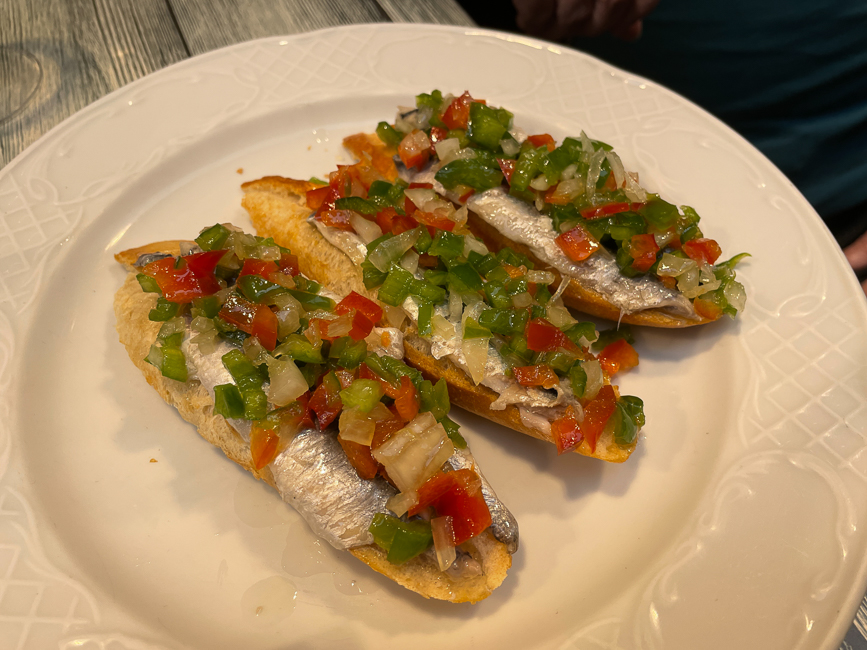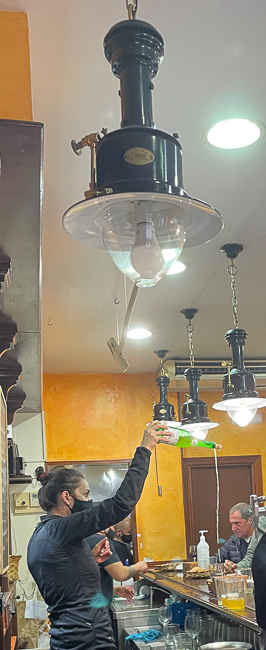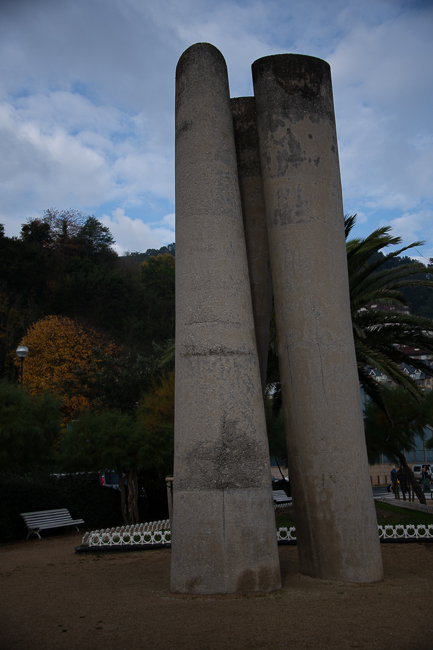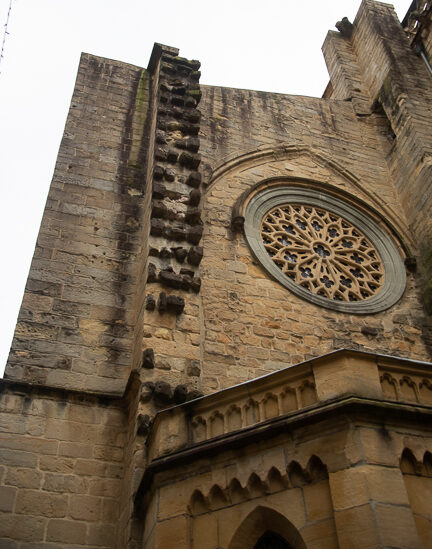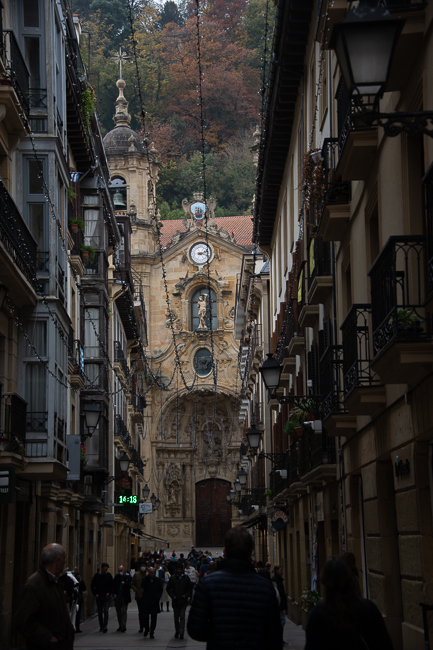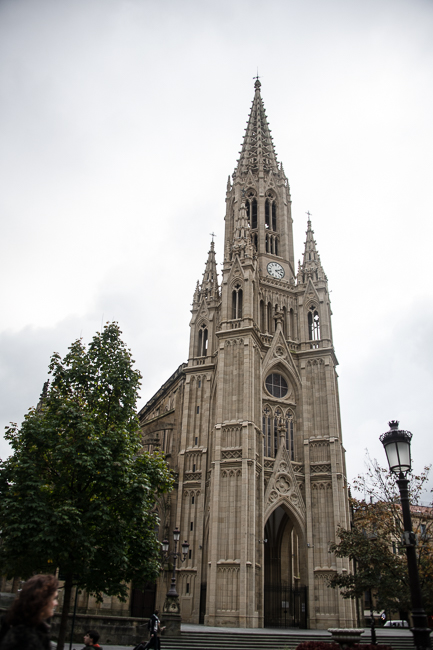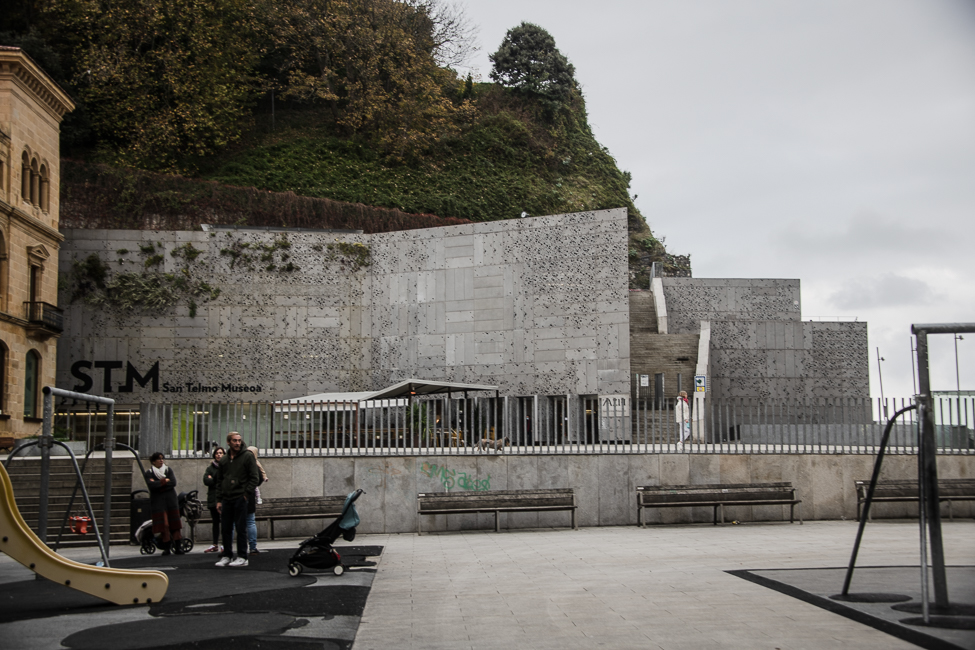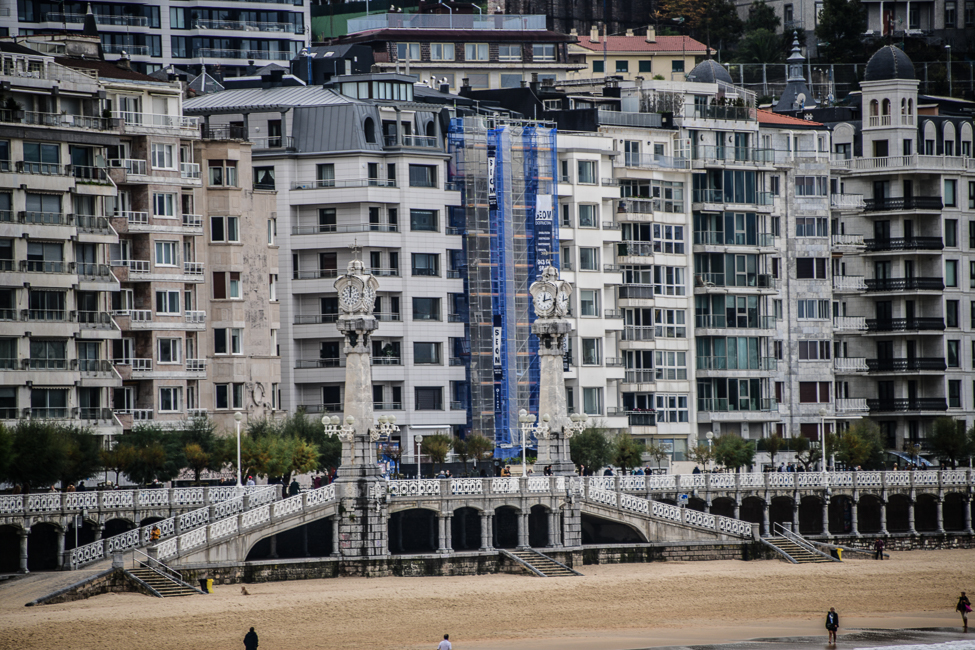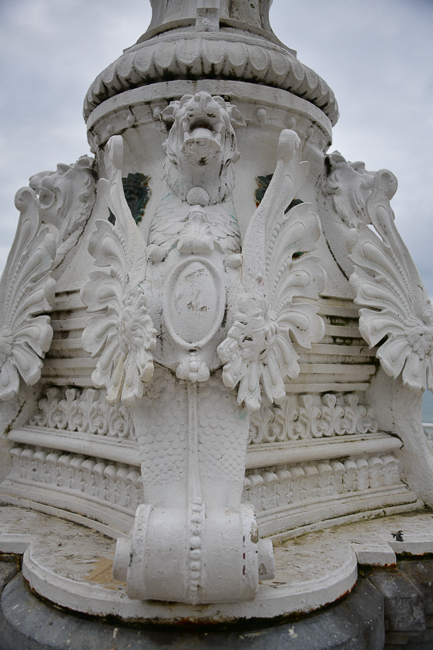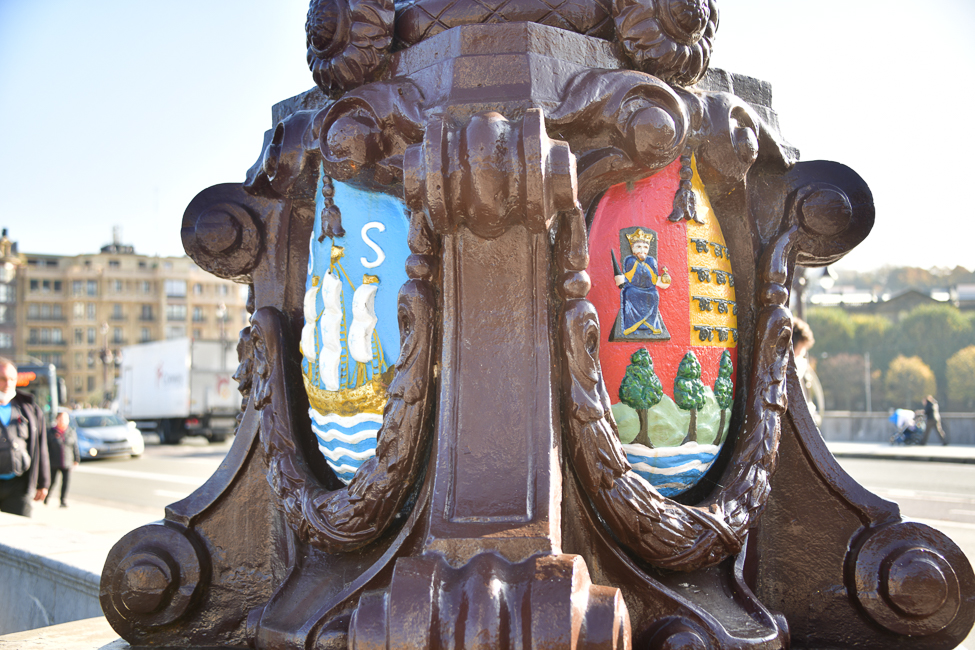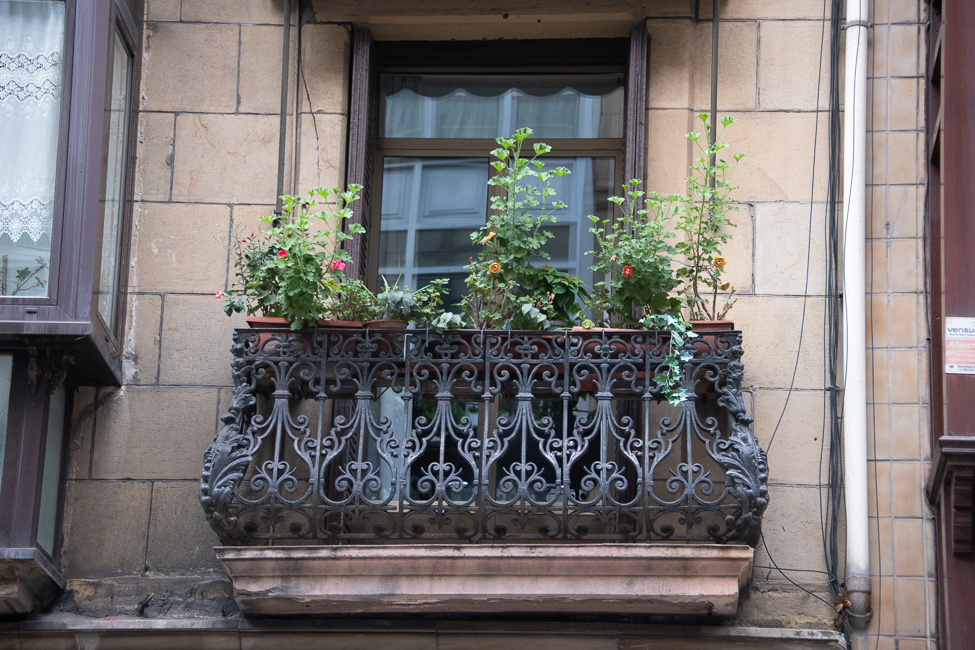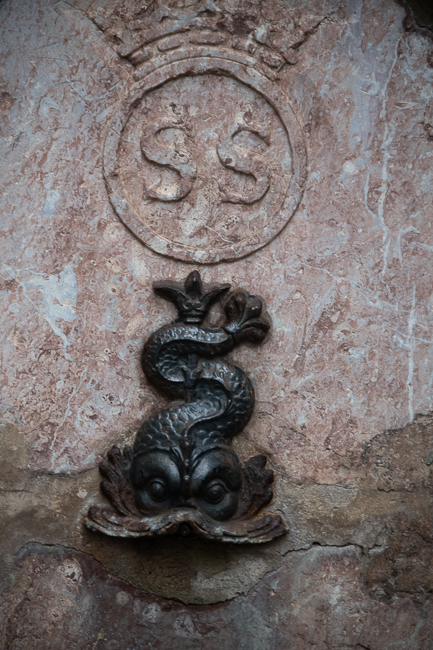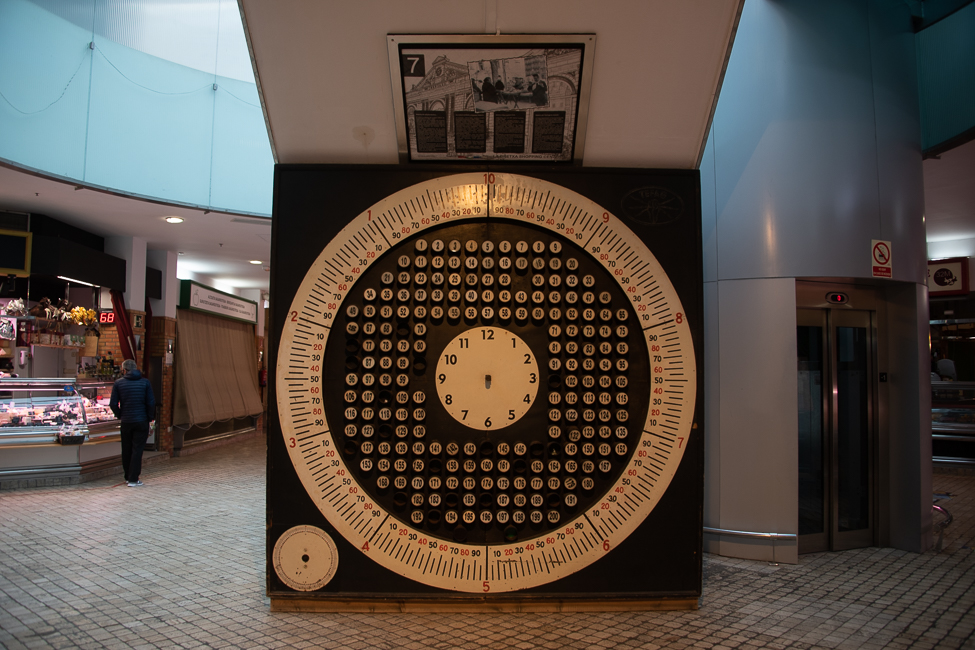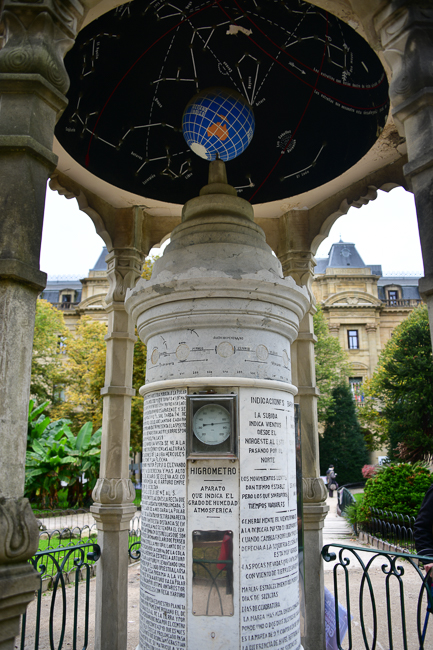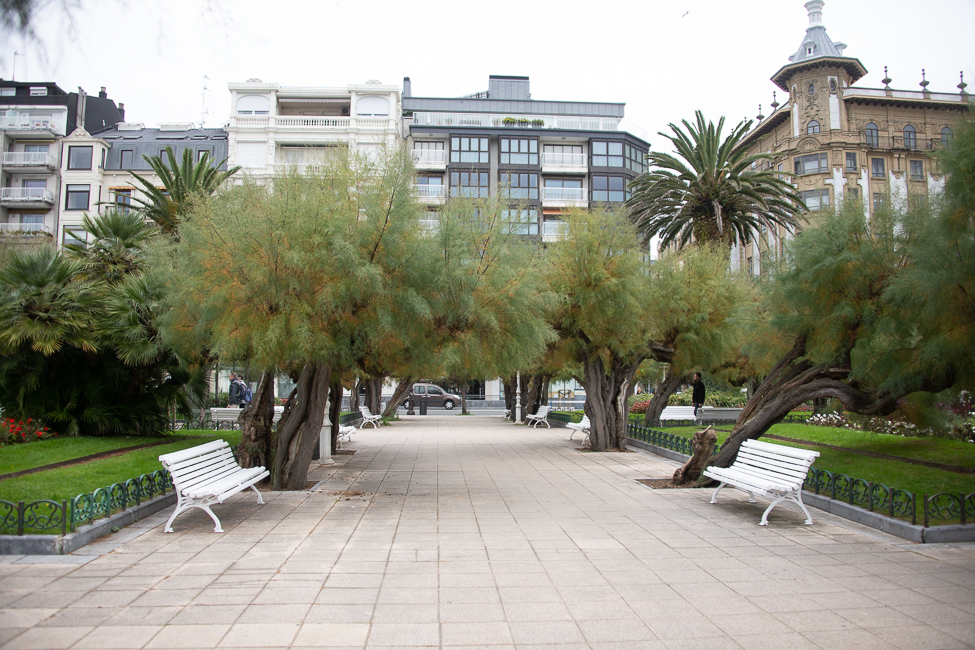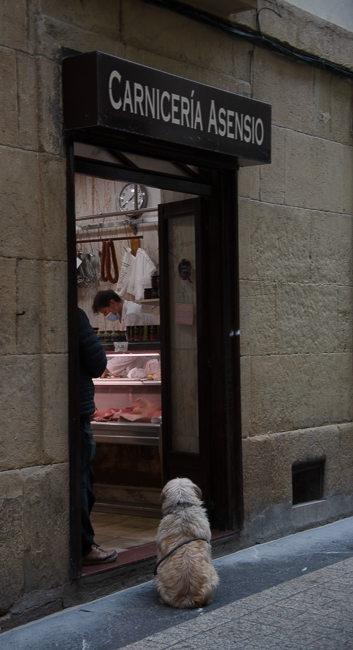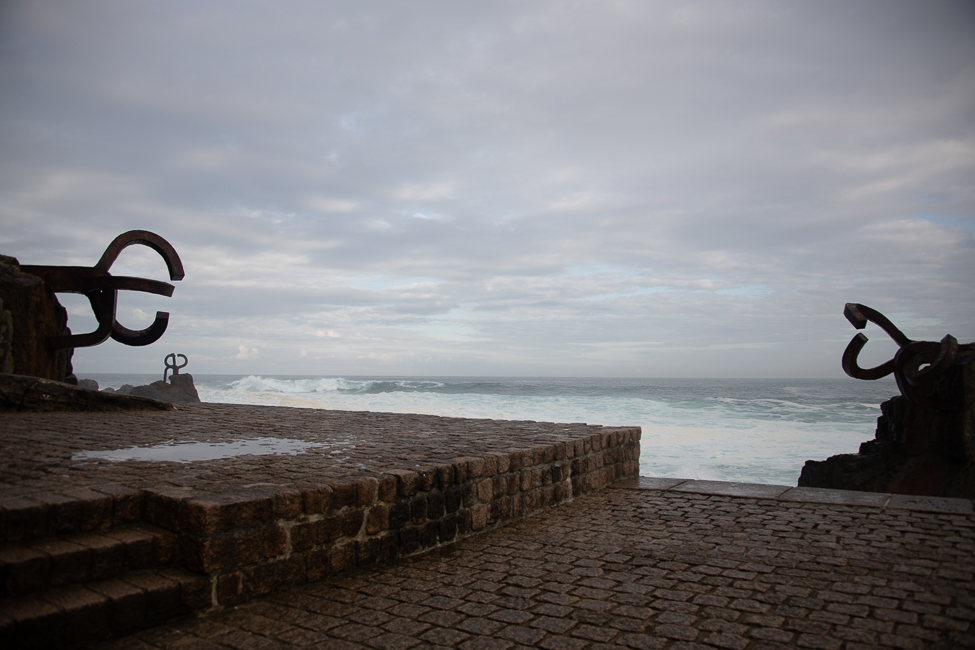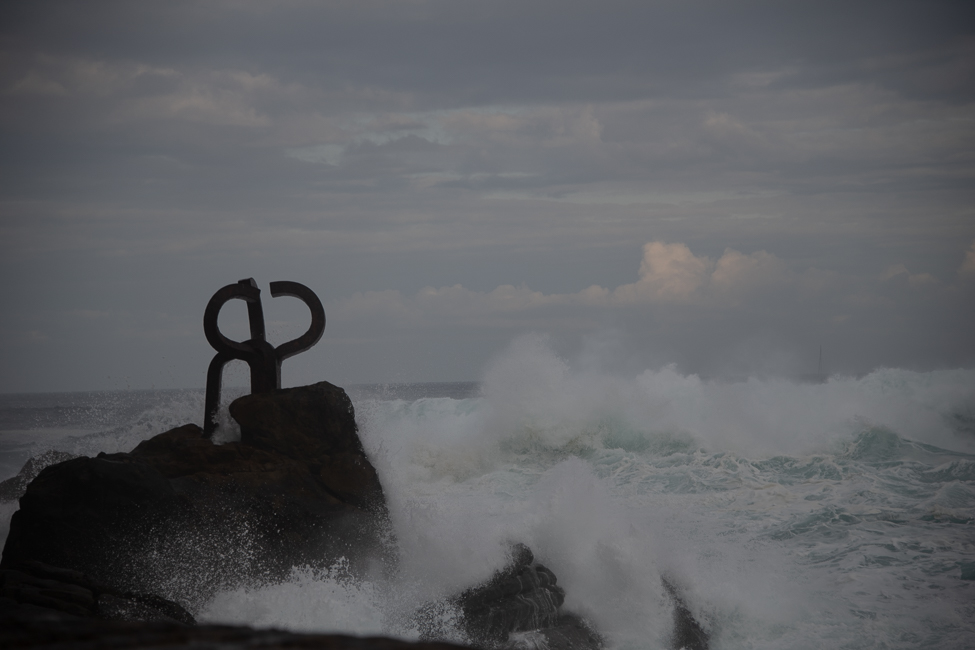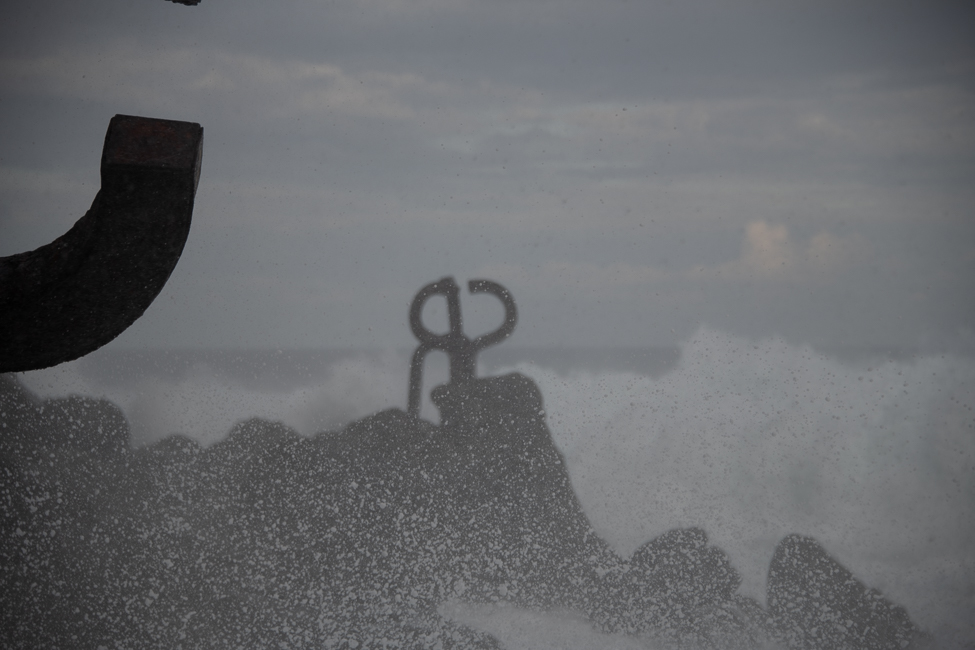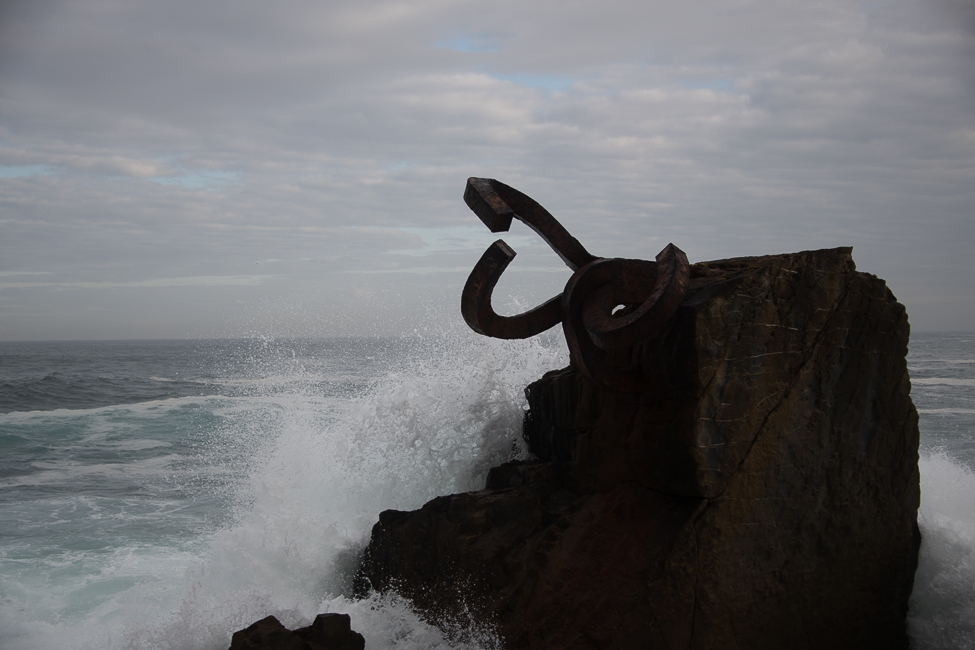November 2021
Donostia – San Sebastián
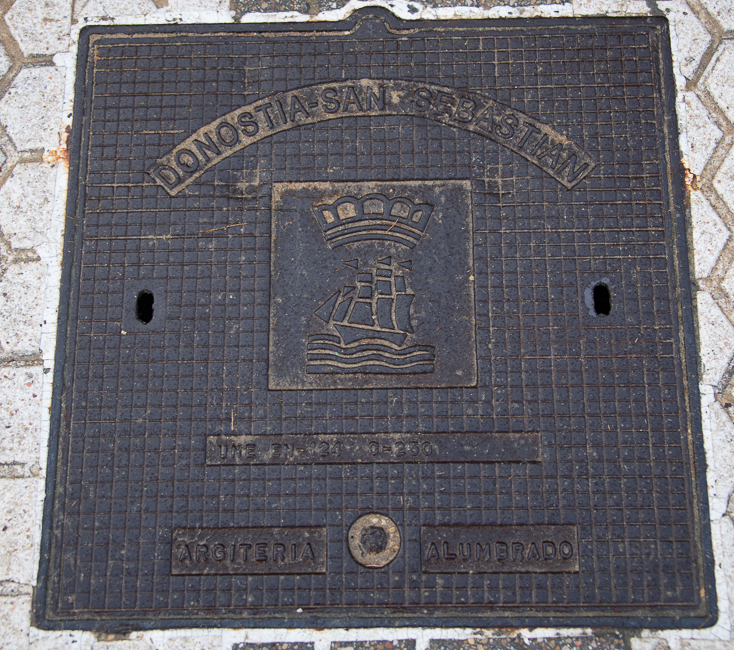 San Sebastián or Donostia in the Basque language is located in the Basque Autonomous Community of Spain on the Bay of Biscay.
San Sebastián or Donostia in the Basque language is located in the Basque Autonomous Community of Spain on the Bay of Biscay.
This area is a culinary heaven. In the world, San Sebastián is only surpassed by Tokyo in the number of Michelin star restaurants.
However, consuming pintxos (pinchos) is my very favorite form of dining while here. The best way to explore pintxos is what many would call a pub crawl. You go from place to place, choose one or two pintxos with a glass of cider, beer, wine or soda and then move on to the next tavern where the specialty will differ from the place you just were.
Txakoli (pronounced chack-oh-lee) is a slightly sparkling, white wine produced in the Basque Country. Although it has been around for centuries the first written mention of txakoli was in 1520. To serve txakoli properly it must be poured from a height so that the wine aerates as it falls into the glass
The cider is served in the same manner.
If you are ever in San Sebastian I highly recommend a pinxtos tour that includes a lot of San Sebastián history thrown in, by Gontxu (Gonzolo) Arceo of Be San Sebastian our day with him was very special and truly a day to remember.
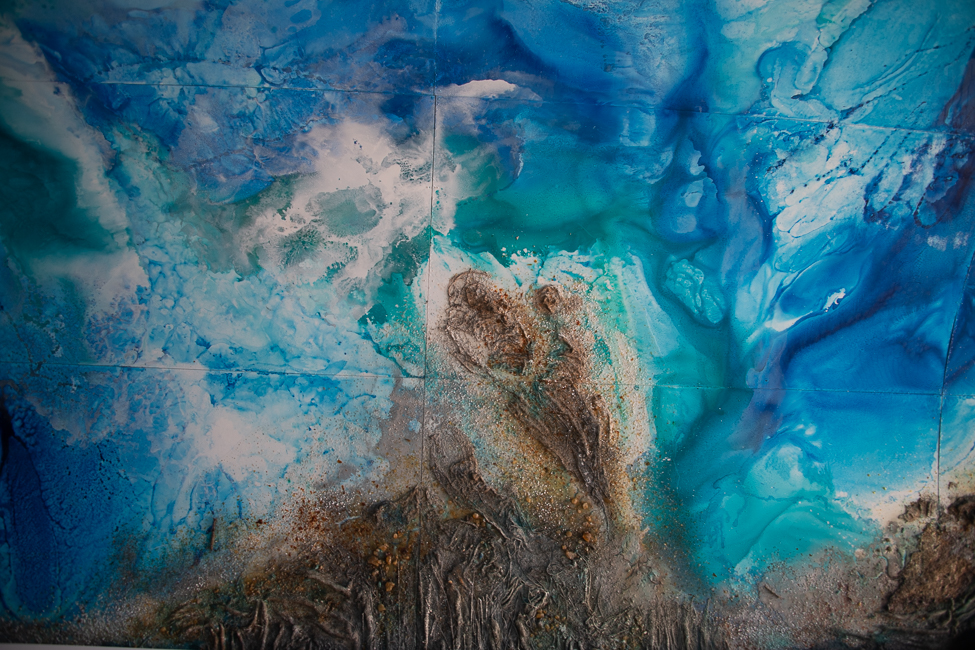
This is on the ceiling of a tunnel on the promenade. It is far more stunning than this small picture shows and was created by Artist Victor Goikoetxea and Architect and Urban Planner Xabier Barrutieta.
The Basque ethnic group comes from a region of southwest France and northwest Spain. The Basque language, spoken by approximately 28 percent of modern Basques, is fascinating. It is not really known exactly where it came from, how it developed, or why it is so distinctive. There are at least six Basque dialects, but the majority of Basques speak a standardized version developed in the 1960s.
Basques lived in northern Spain when the Romans invaded the area in 196 BCE, but due to their relative isolation, managed to retain most of their traditions and laws
From around CE 824, Basque was part of the Kingdom of Navarre until Navarre was annexed by what is now modern Spain. Basque self-government was abolished by the Spanish government in Madrid beginning in 1839.
Over time, a Basque nationalist movement began to grow. However, Franco had other ideas. He forbade the Basque language, stripped rights from the Basques, and ordered the destruction of the Basque city of Guernica.
Ondaretta Prison which opened in 1890 was closed in 1948. Thousands of men and women were held prisoner here, many of which were arrested for political reasons. Hundreds were placed on death row and then executed during the Franco Regime.
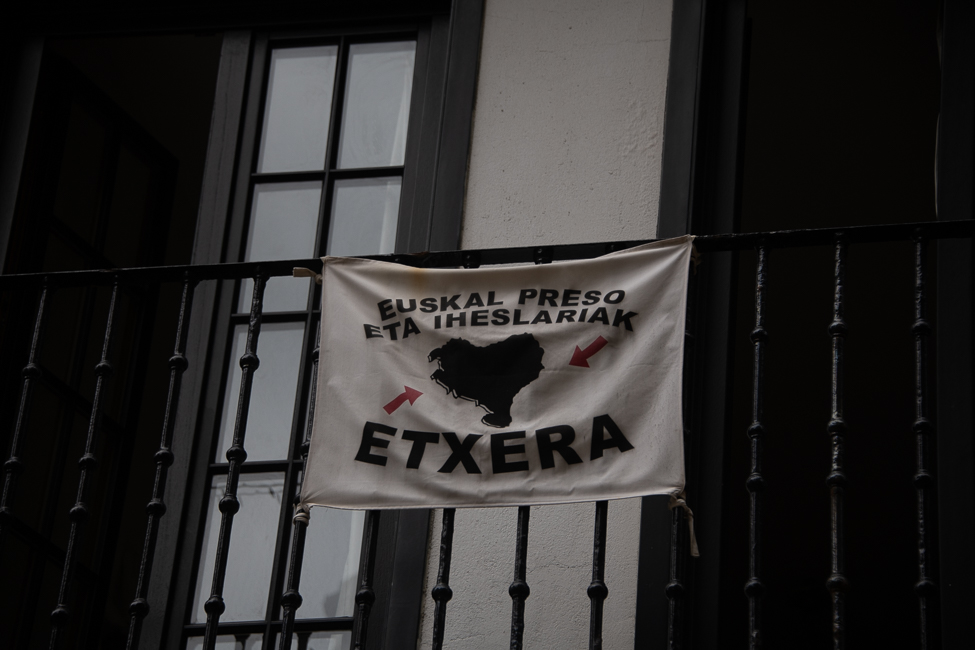 As a result of Franco’s horrors, Basque separatists formed Euskadi Ta Askatasuna (ETA) in 1959. This brought about decades of terrorism, the organization disbanded in May 2018.
As a result of Franco’s horrors, Basque separatists formed Euskadi Ta Askatasuna (ETA) in 1959. This brought about decades of terrorism, the organization disbanded in May 2018.
By then, Spain had granted relative economic and political autonomy to Basque Country, and acknowledged a separate Basque identity.
Today the area is filled with tourists from all over the world, enjoying amazing food in a beautiful city.
The siege of San Sebastián, which lasted from July to September 1813, was part of the Peninsular war. During the assault, British and Portuguese forces burned much of the city to the ground in the process of taking it from Napolean’s troops. So much of what you see was built after that time. Therefore, the architecture of San Sebastián is a feast for the eyes with medieval townhouses, Renaissance monasteries, neo-Gothic churches, Belle Epoque parks, and contemporary museums.
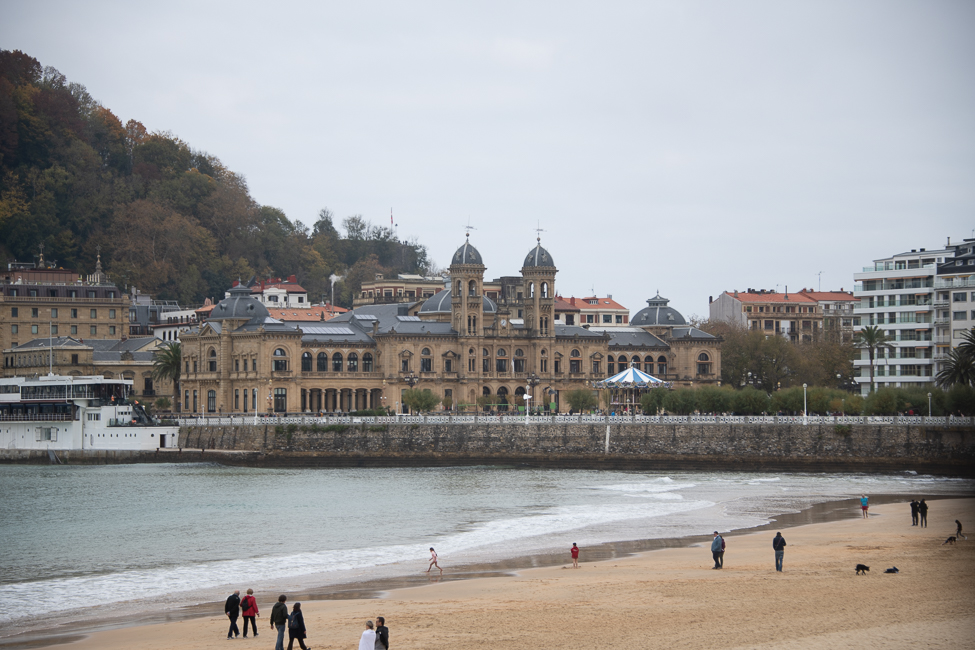
The crescent-shaped Playa de la Concha is the most iconic spot in San Sebastián. The building in the center is the Town Hall of San Sebastián
 *
*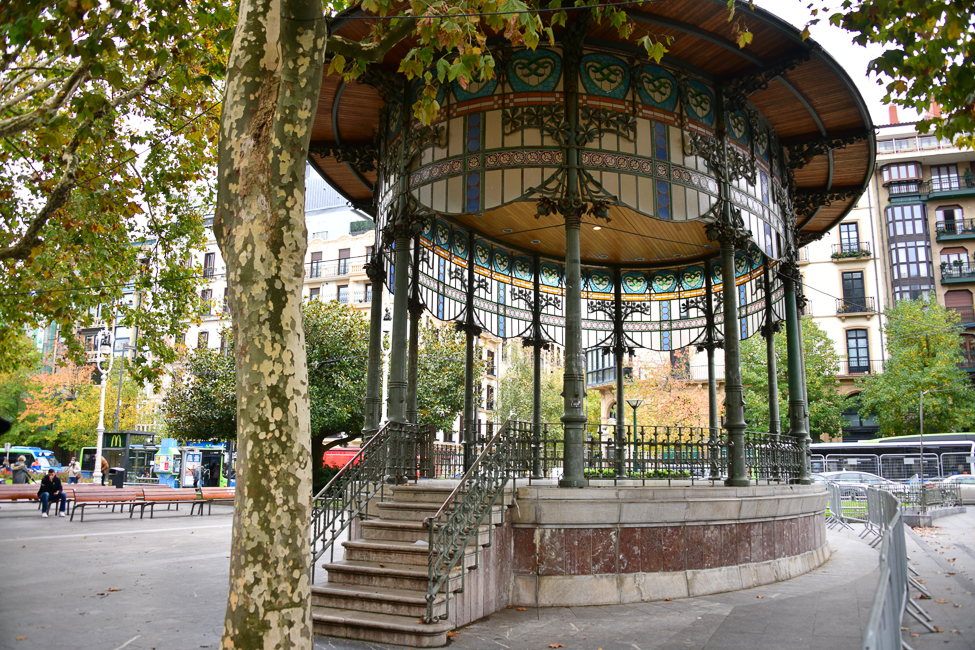 **
**
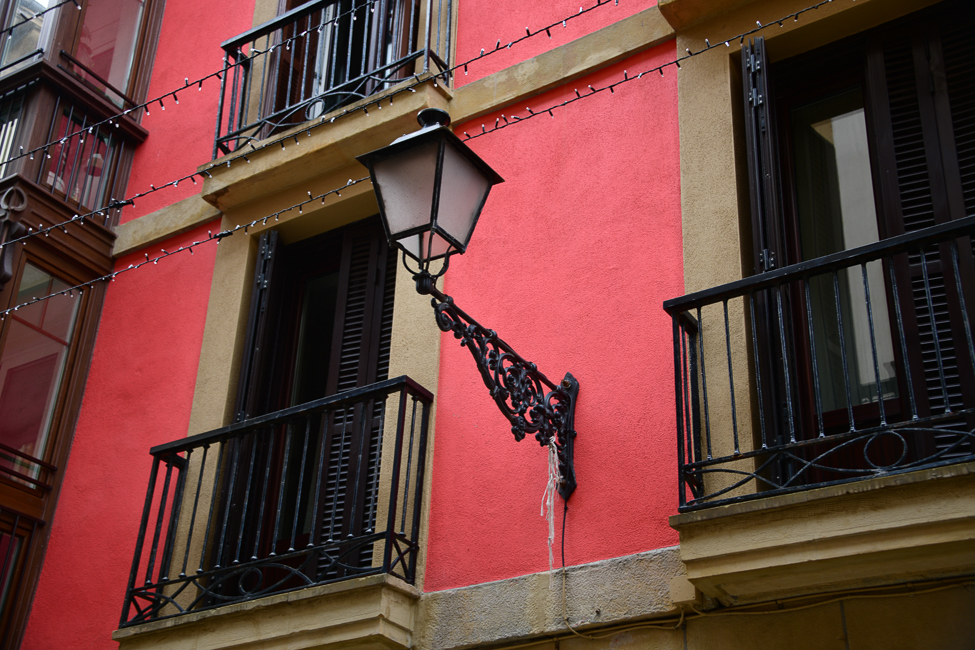 *
*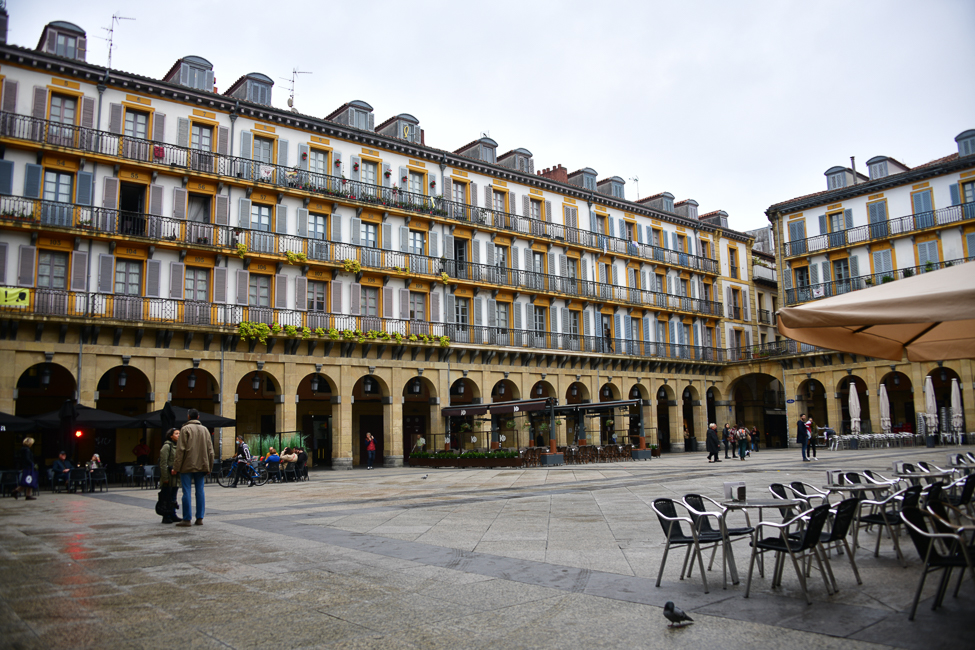 Constitution Square was designed by architect Ugartemendia, and built in 1817 as one of the more grand projects in the rebuilding of San Sebastián after the devastating 1813 fire.
Constitution Square was designed by architect Ugartemendia, and built in 1817 as one of the more grand projects in the rebuilding of San Sebastián after the devastating 1813 fire.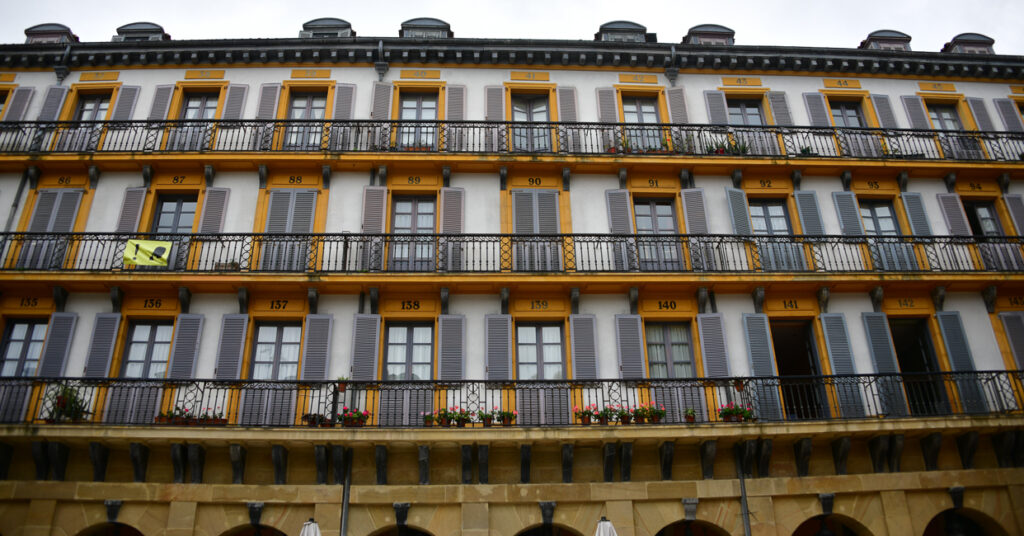
One of the first things I noticed upon entering the square were the numbers over all of the doors. Constitution square was once a bullring, and these numbers mark what once were the bullring boxes where spectators would rent the balconies to watch the bullfights.
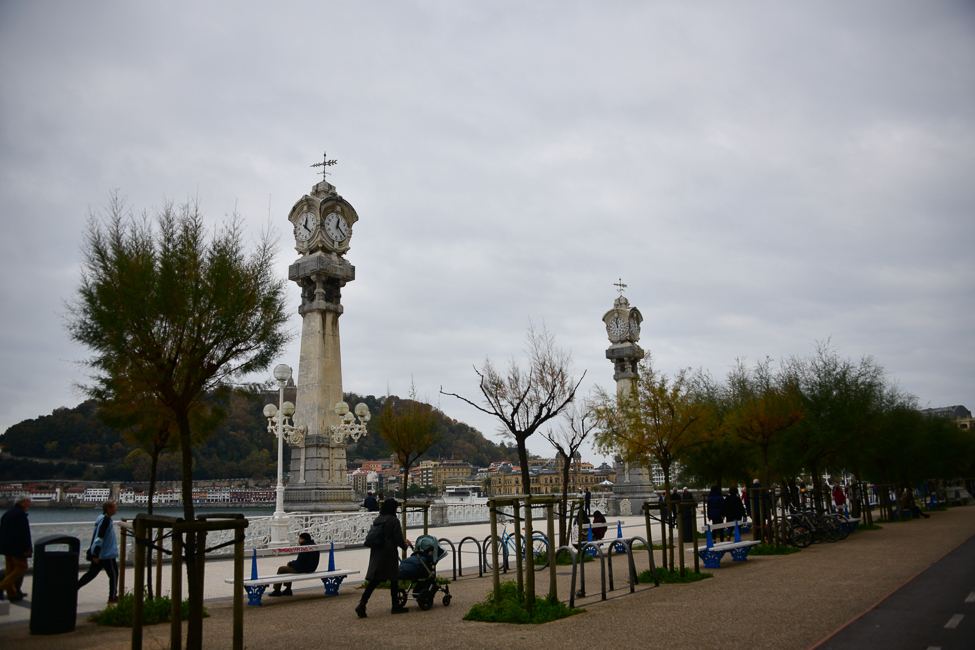
The left is a clock the right is a barometer The flank a set of stairs that go down to Playa de la Concha. The promenade was designed by Jose Goicoa in 1863, in the neo-classical Parisian style.
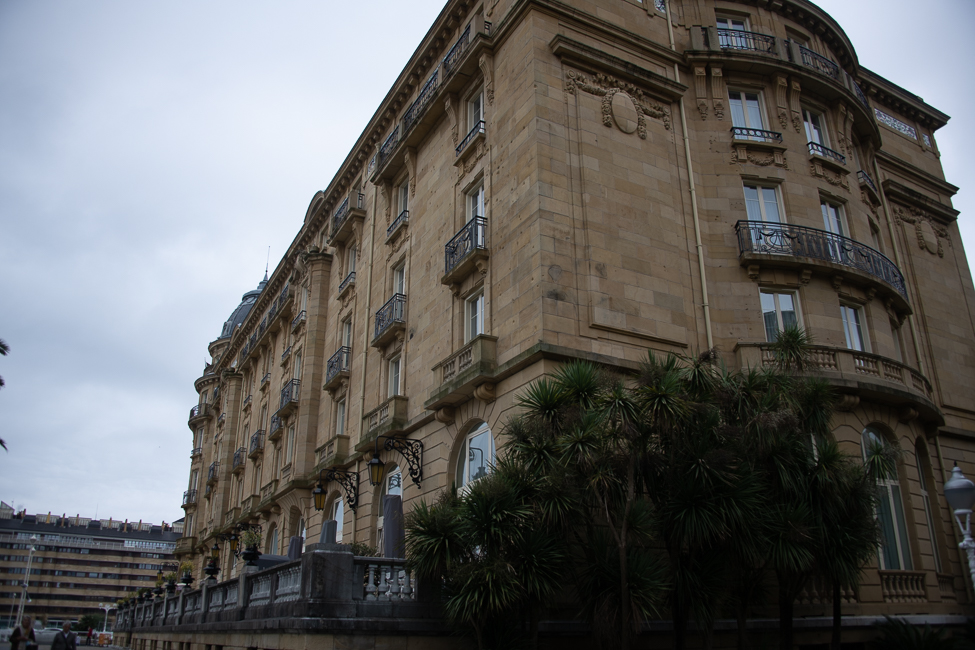
The Hotel Maria Cristina is a five star venue with noticeable bullet holes left over from the civil war
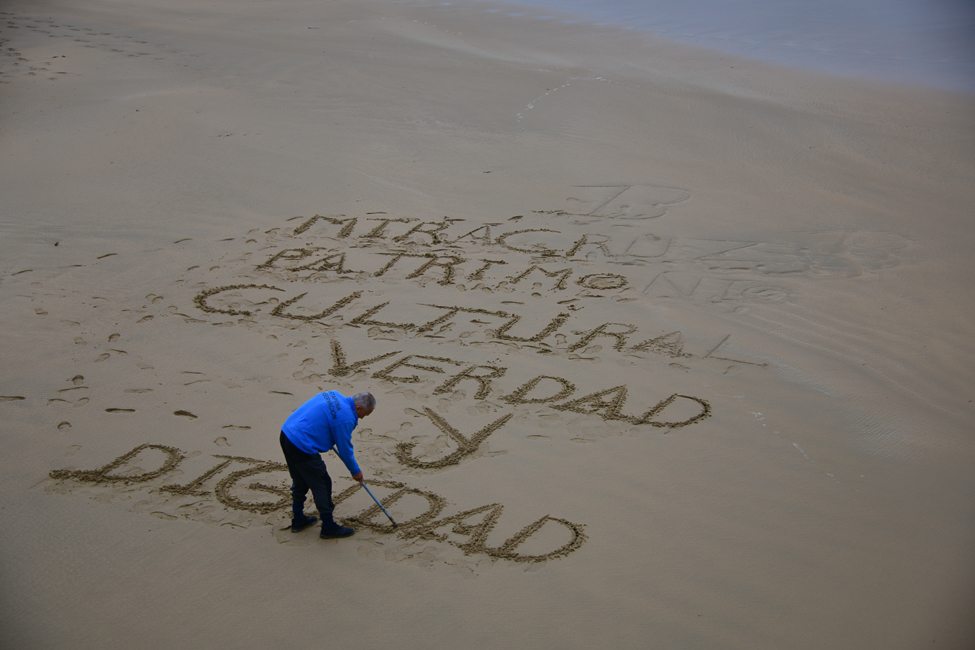
The first word (Miraci?) is too washed away to translate, but the rest essentially says: Heritage, Culture, Truth and Dignity
*
In the fish market, under the stairway is this fascinating piece of equipment. The sign that accompanies it explains:
The Market Clock was used for tuna (bonito) auctions. The central hand indicated the price of the batches currently on sale
The numbered circles at the bottom represented the retailers, who used push buttons installed in the seats located in the hall (which had a large lectern and was rather like an auditorium) to indicate the price they were willing to pay for each item.
The hall also contained a blackboard with a tide calendar, the names of the boats scheduled to leave harbor, and the tides they were planning to go on.
The clock was later used, in the same building, for auctioning the stands to be occupied by the different participants in the old Amara fairs.
It stopped working some time between 1960 and 1970.
More than 15,000 Donostiarras (the people of San Sebastián as they are called in Basque) that belong to over 100 bands, actively take part in the drumming at the Tamborrada. The roots of this tradition dates to the time of Napolean’s occupation of San Sebastian during the Peninsular Wars. During the occupation, the French troops marched around the city, banging on their drums. During the day the women of San Sebastian would collect water at one of the two fountains. No one knows who started it, but the women began to beat on the buckets to mock the French occupying troops.
The Tamborrada celebrated today began in 1836 as part of the local carnival with local Basque gastronomic societies (sociedades gastronómicas) forming bands.
Now, on January 20th at midnight, crowds pack Constitution Square, the mayor raises the city’s flag and the city begins 24 hours of non-stop drumming while singing the March of San Sebastián. Since the gastronomic societies form many of the bands, many of the drummers also dress up as chefs. I told you this town had an amazing culinary history.
If you are a regular reader you know I love public art. This piece is a symbol of San Sebastián
This is The Peine del Viento or Comb of the Wind – a set of three sculptures designed by Eduardo Chillida and installed at the western end of Playa de Ondarreta.
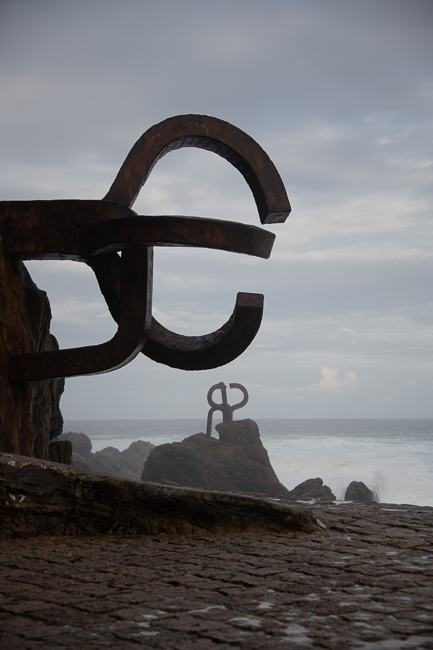
Eduardo Chillida (1924 – 2002), was a Spanish Basque sculptor notable for his monumental abstract works.
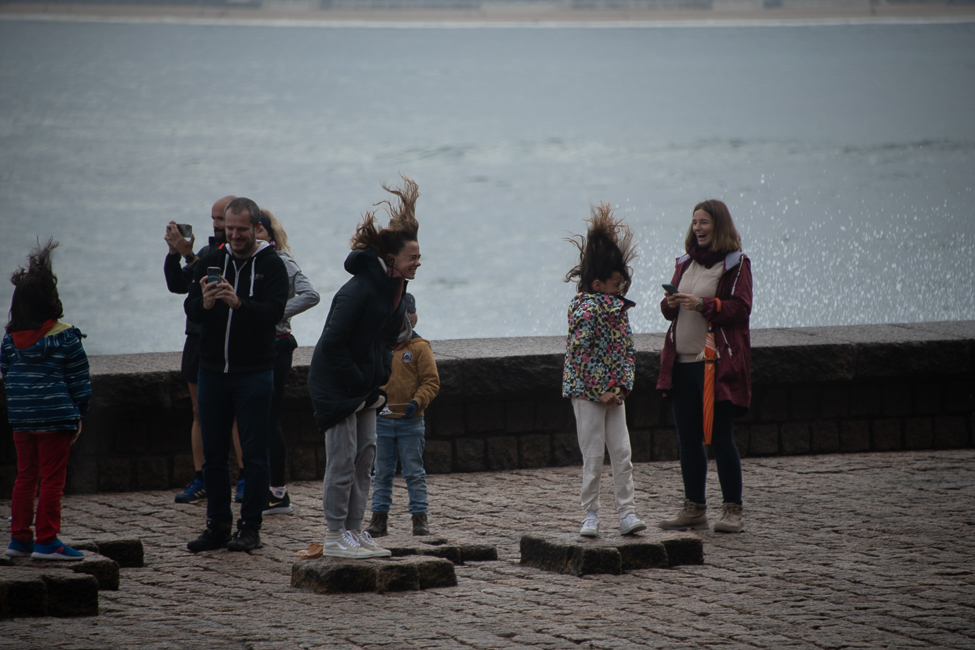
Part of the installation is these “blow holes” I also witnessed water being blown up these, with a glorious deep resounding sound.
There is so much more that I could say about San Sebastian. Very few towns scream to me that I must return, and San Sebastian is one. There were so many things to see and do that I did not get to, I will return.
